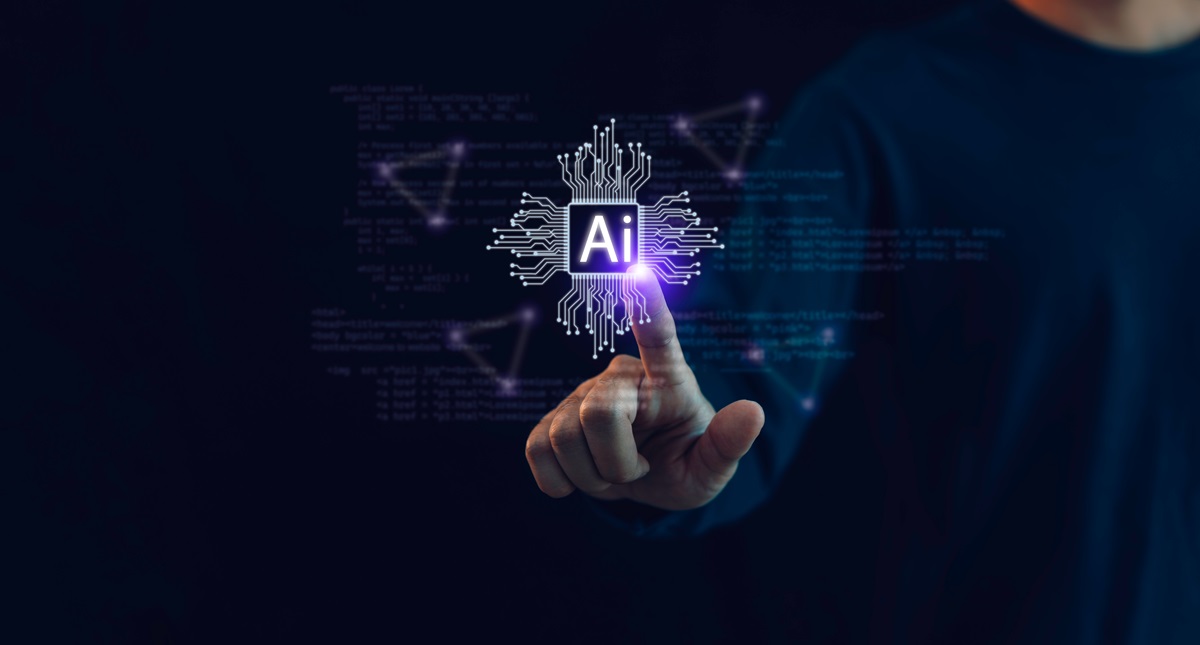Agentic AI represents a fundamental shift in artificial intelligence, enabling systems to not only autonomously execute complex decisions but also to dynamically adapt to changing environments. Unlike traditional AI, which relies on predefined instructions and extensive human intervention, agentic AI incorporates advanced machine learning techniques, reinforcement learning, and real-time decision-making processes to function with a high degree of autonomy. These systems are designed to operate with contextual awareness, to set and pursue independent goals, and to refine their decision-making strategies based on feedback loops, making them particularly effective in dynamic and unpredictable scenarios.
The key characteristics of agentic AI include:
- Autonomy: These systems are capable of functioning independently, making decisions without constant human input.
- Contextual awareness: They understand and respond to their environment dynamically, taking into account various factors and changes.
- Goal setting: Agentic AI can define and pursue objectives on its own, adjusting strategies as necessary.
- Adaptability: Through continuous learning from feedback loops, these systems refine their decision-making processes, improving over time.
- Effectiveness in dynamic environments: Due to their adaptive nature, agentic AI systems excel in unpredictable or rapidly changing scenarios where traditional AI might struggle.
By 2028, it is projected that agentic AI will autonomously manage at least 15% of routine organizational decisions, marking a significant evolution from its current limited role. This transformation goes beyond efficiency improvements; it establishes agentic AI as a key component of competitive strategy, enabling businesses to respond proactively to market shifts, optimize resource allocation, and minimize reliance on manual decision making, unlocking significant operational and strategic advantages.
Advancing beyond static algorithms to dynamic autonomy
Agentic AI is driven by a unique combination of attributes that set it apart from static algorithmic models, with autonomy, contextual sensitivity, and adaptive learning at its core. These systems excel at interpreting complex environmental cues, processing vast datasets in real time, and recalibrating strategies to align with evolving objectives.
For example, in the field of autonomous robotics, agentic AI can interpret sensor data, assess terrain conditions, and modify movement strategies in real time, enabling seamless navigation and task execution. Similarly, in financial markets, these systems can analyze a multitude of economic indicators, past trading patterns, news, and geopolitical developments to autonomously adjust investment portfolios, mitigating risk and maximizing returns.
Furthermore, the emergence of multi-agent systems, where multiple AI entities collaborate in decentralized decision making, enhances the efficacy of agentic AI. These systems improve coordination in logistics, cybersecurity, and emergency response scenarios by enabling AI agents to communicate, share insights, and refine operational strategies autonomously, minimizing the need for human intervention.
Ultimately, the continuing development of agentic AI signifies a paradigm shift where AI-driven automation extends beyond static task execution, evolving into self-sustaining, adaptive systems capable of optimizing operations across diverse industries.
Transformative impacts of Agentic AI across industries
The versatility of agentic AI extends across a wide range of industries, each harnessing its capabilities to tackle complex challenges and unlock hidden opportunities.
In finance, the adoption of agentic AI is set to transform risk assessment, fraud detection, and portfolio management paradigms.
Through autonomous analysis of macroeconomic indicators, market dynamics, and transaction patterns, these systems enable financial institutions to preemptively identify vulnerabilities and optimize investment strategies.
For instance, agentic AI can detect anomalous transaction patterns indicative of fraudulent activity and implement mitigation protocols with minimal latency. A real-world example of this is PayPal's AI-driven fraud detection system, which continuously monitors transactions, leveraging deep learning models to identify suspicious activities and block fraudulent transactions in real time. Similarly, JPMorgan Chase employs agentic AI to analyze massive financial datasets, identifying unusual patterns and preventing fraud before it occurs.
Logistics and supply chain operations are typical beneficiaries of agentic AI’s capabilities. By integrating predictive analytics with real-time environmental monitoring, these systems can optimize resource allocation and operational continuity. Imagine a situation where an agentic AI platform dynamically recalibrates delivery schedules in response to geopolitical disruptions, ensuring sustained supply chain resilience. Or consider a scenario where inclement weather jeopardizes a critical shipment.
These applications exemplify how these AI-driven systems strengthen operational resilience by proactively addressing disruptions, identifying inefficiencies, and refining strategies through self-improvement mechanisms. As a result, conventional workflows evolve into responsive ecosystems that can anticipate challenges, mitigate risks, and drive sustained efficiency gains across various industries.
Ensuring successful Agentic AI adoption: from pilot programs to scalable solutions
The trajectory of agentic AI adoption is characterized by a transition from experimental proofs of concept to enterprise-wide deployments. This evolution reflects increasing confidence in the technology’s scalability and reliability. However, scaling agentic AI demands a strategic approach. Enterprises must prioritize pilot programs to validate feasibility, generate actionable insights, and identify the infrastructural requirements for broader implementation. These pilot initiatives should focus on benchmarking AI performance across different functions, evaluating the technology's ability to drive efficiencies, and identifying integration challenges that must be addressed before full-scale deployment.

Figure 1 - Gap analysis in Agentic AI development
A successful transition from pilot to scaled implementation requires robust data governance, AI lifecycle management, and an adaptable IT architecture capable of supporting autonomous decision making at scale. AI adoption is often hindered by outdated legacy systems and fragmented data ecosystems, forcing organizations to overhaul their infrastructure through investments in cloud computing, edge processing, and resilient data pipelines. These investments are essential to support the computational demands of real-time decision making while maintaining agility and scalability.
Beyond infrastructure, workforce readiness is a critical success factor in AI adoption. Upskilling employees to work alongside intelligent automation ensures that human oversight remains integral to AI-driven processes. Organizations must develop AI literacy programs to foster a culture where employees can leverage AI-enhanced tools effectively rather than perceiving them as disruptive threats. A well-trained workforce enhances AI’s operational effectiveness, enabling a seamless human-machine collaboration that maximizes productivity and innovation.

Figure 2 - Agentic AI Implementation Strategies
Furthermore, integrating agentic AI into existing workflows demands a shift in enterprise architecture toward modular, API-driven frameworks that allow seamless interoperability between AI agents and traditional IT ecosystems. This integration strategy should prioritize iterative refinement, ensuring that AI systems remain adaptable to evolving business needs and regulatory requirements.
Ethical and regulatory challenges of Agentic AI: from autonomy to accountability
Unlike generative AI, which focuses on content creation and augmentation, agentic AI actively makes autonomous decisions, learns from environmental feedback, and adapts its strategies in real time.
This increased level of autonomy introduces greater ethical concerns, legal liabilities, and security risks, requiring more stringent oversight and governance structures.
One of the fundamental concerns is autonomy in decision making, which blurs the lines of accountability. When agentic AI executes decisions with minimal human oversight, determining liability for errors or biases becomes more complex. Unlike generative AI, which produces static outputs based on input prompts, agentic AI operates in dynamic environments, requiring organizations to establish robust governance mechanisms to ensure that decisions remain ethical, explainable, and auditable.
Another challenge is algorithmic bias and unintended consequences. While all AI systems can inherit biases from training data, agentic AI’s ability to act independently increases the risk of compounding errors and reinforcing systemic biases over time. If left unchecked, these models could make discriminatory hiring decisions, unfairly deny financial services, or mismanage autonomous systems. To counteract this, organizations must invest in bias detection frameworks, fairness audits, and continuous monitoring to prevent ethical drift in decision making.
Additionally, cybersecurity risks are amplified with agentic AI due to its reliance on continuous real-time data streams.
Unlike generative AI models, which can function offline or within controlled environments, agentic AI systems rely on real-time data ingestion, external API interactions, and decentralized decision-making architectures. These complexities expose agentic AI to data poisoning, adversarial attacks, and malicious system manipulation.
To mitigate these risks, organizations must implement zero-trust security architectures, encrypted decision logs, and anomaly detection mechanisms that provide fail-safes against unauthorized AI-driven decisions.
Regulatory compliance presents another layer of complexity. Many existing AI regulations, such as the GDPR and CCPA, primarily address data privacy and user consent but lack explicit provisions for the accountability of agentic AI decision making. Emerging regulatory frameworks, such as the EU AI Act, are beginning to address these concerns by classifying agentic AI as a high-risk application, requiring stricter transparency, documentation, and risk assessment standards. Financial institutions leveraging agentic AI for risk assessment and fraud detection must align with these evolving regulatory expectations, ensuring that autonomous decisions adhere to human-in-the-loop principles where necessary.

Figure 3 - Timeline of EU AI Act
As agentic AI continues to evolve, global governance frameworks must establish clearer guidelines to differentiate between decision augmentation and full autonomy. Regulatory bodies, industry leaders, and AI ethics researchers must collaborate to create accountability structures that ensure responsible AI deployment while fostering innovation.
Strategic and operational advantages
From an operational standpoint, agentic AI enables businesses to redefine workflows and automate complex processes that previously required significant human oversight.
By automating time-consuming and error-prone manual tasks, agentic AI enables human teams to focus on high-value strategic initiatives, driving innovation and problem solving. This shift is not just about efficiency—it restructures business roles, encouraging organizations to redesign job functions around human-AI collaboration rather than mere automation.
One of the most significant changes that agentic AI brings to businesses is the transformation of organizational decision-making structures. Traditional decision making is often hierarchical and dependent on sequential approvals, which can slow down responsiveness. Agentic AI decentralizes this process, enabling faster, data-driven decision making while ensuring consistency and adaptability. This evolution compels companies to rethink governance frameworks and develop robust oversight mechanisms that ensure AI-driven actions align with business ethics, regulatory requirements, and corporate objectives.
Furthermore, agentic AI fosters continuous learning and self-improvement within enterprise ecosystems. Unlike traditional automation tools that require periodic updates and human intervention, agentic AI systems autonomously refine their models by processing new information and adjusting their algorithms accordingly. This adaptive learning capability enhances long-term operational sustainability, ensuring that businesses stay competitive in an environment of constant technological disruption.
Ultimately, agentic AI does not simply enhance business operations; it reshapes entire industries, driving business model innovation and long-term competitive differentiation.
Companies that proactively integrate agentic AI into their core strategies will not only gain efficiency advantages but will also take the lead in designing AI-augmented business ecosystems, where human expertise and machine intelligence work symbiotically to drive new value creation and sustainable growth in an increasingly automated world.


